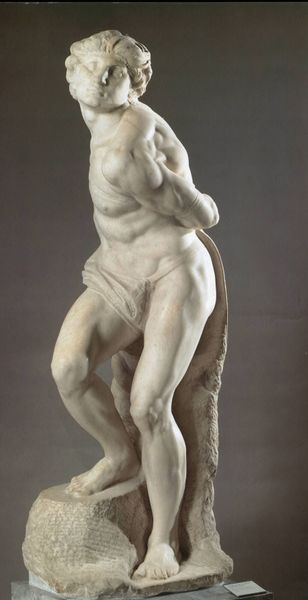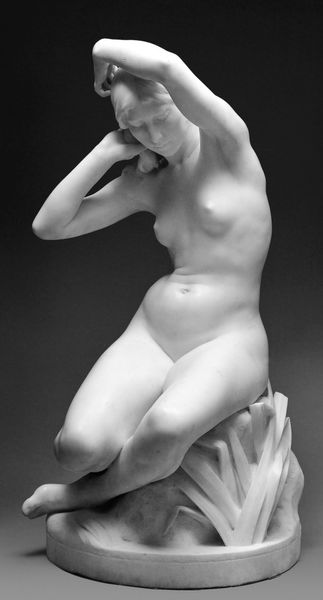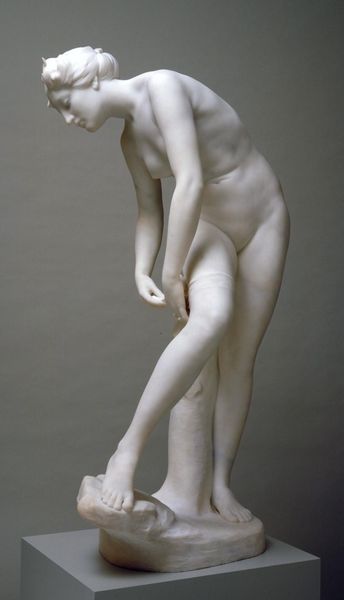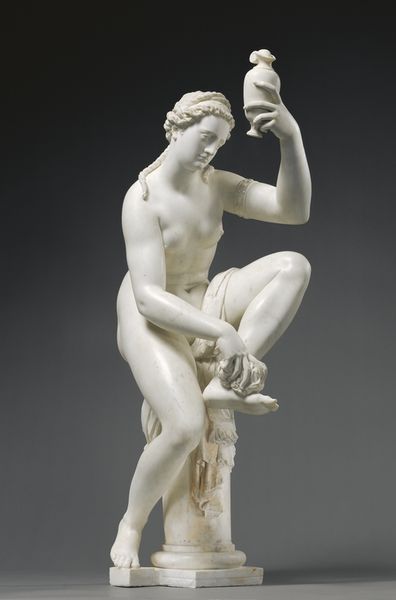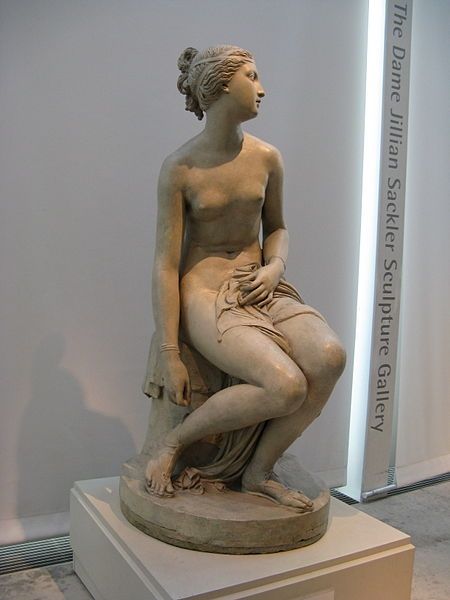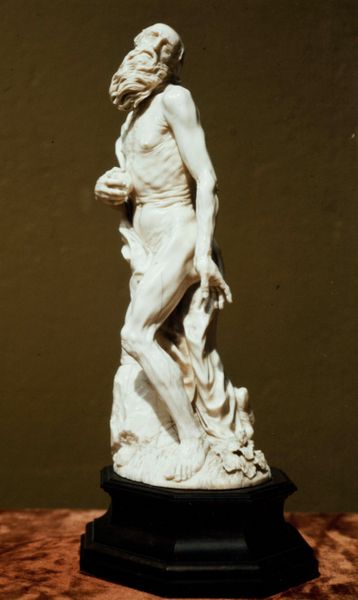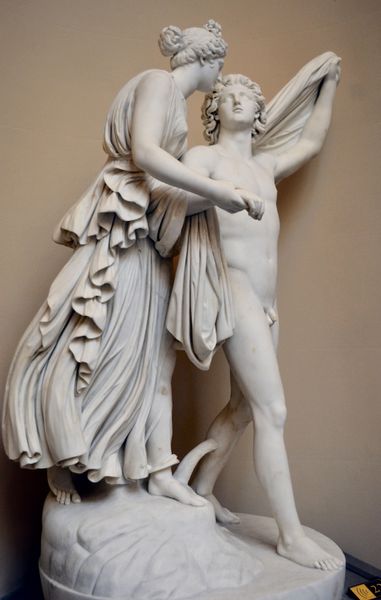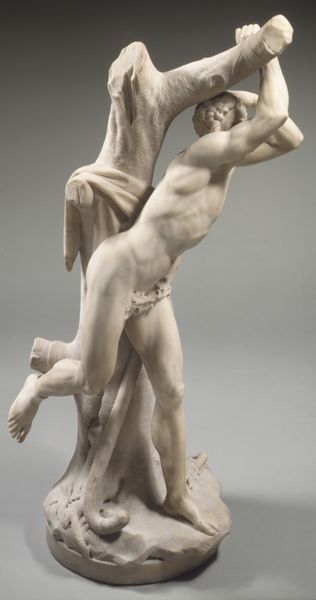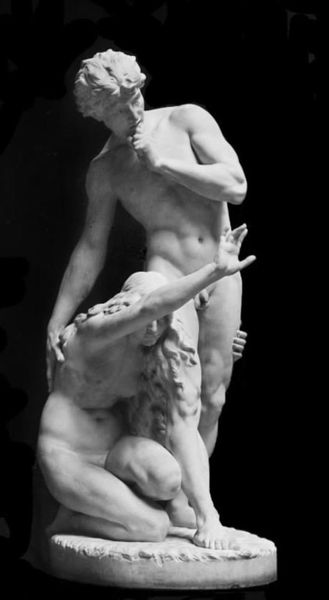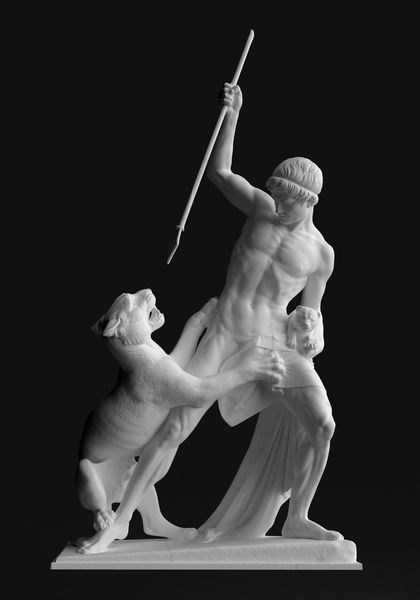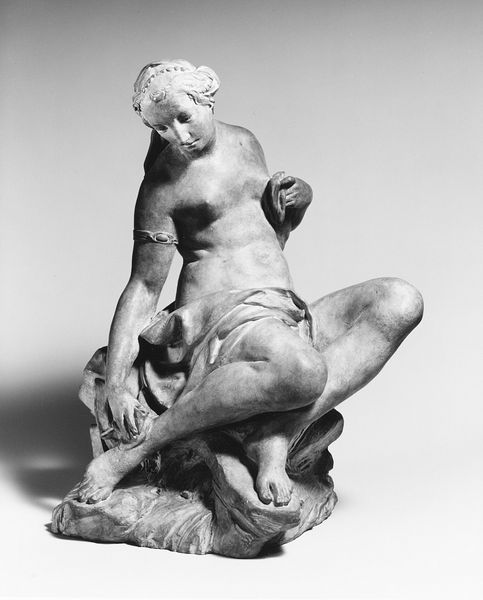
carving, photography, sculpture, marble
#
portrait
#
high-renaissance
#
carving
#
sculpture
#
figuration
#
photography
#
sculpture
#
monochrome photography
#
history-painting
#
monochrome
#
decorative-art
#
marble
#
italian-renaissance
#
nude
#
monochrome
Copyright: Public Domain
Curator: Looking at this powerful sculpture, titled "Rebellious Captive," a marble carving dating roughly from 1505 to 1545, and attributed to Michelangelo, one immediately notes the palpable tension within the figure. What strikes you initially? Editor: The overriding impression is one of restrained struggle. His muscularity is evident, but the bonds, though unseen, clearly limit him. His head is turned, as though looking towards an escape. Curator: This work, part of a larger, unrealized project for the tomb of Pope Julius II, reflects the High Renaissance interest in the human form, but also the era’s political and philosophical concerns about free will versus constraint. The figures in the tomb would represent virtues and liberal arts, yet each of the captives represented subjugated provinces. Editor: Interesting. This brings up many intriguing iconographic associations. Consider the twisted torso. In a tradition stretching back to antiquity, bound figures are visual shorthand for defeated enemies, subjects under imperial rule. But here, Michelangelo invests his figure with a profound sense of inner strength, as well as potential energy ready to burst forth. Curator: Absolutely, the politics of imagery at play here are compelling. The fact that the tomb was never completed underscores the complexities of artistic production within the patronage system of the time. Furthermore, it adds an extra layer to the sculpture, because as an incomplete form, it could even stand as a metaphor for the unfulfilled potential that we all have as human beings in social hierarchies. Editor: And don't overlook the implicit Christian symbolism. The idea of martyrdom, bearing burdens, is conveyed not through overt symbols but the subjugated pose of the marble itself, almost trapped, fighting its way out of the very block from which it comes. Curator: True. And it’s fascinating to see how Michelangelo subtly transforms the iconography of captivity into a meditation on the human spirit's resilience against institutional suppression. Editor: Indeed. By engaging so powerfully with symbols of historical conflict, Michelangelo’s sculpture becomes a timeless statement about resisting subjugation, whatever form it takes. Curator: Looking closer at the sculpture really gives you a sense of human condition, the ever-present tension between our free will and the chains we either put on ourselves, or society puts on us. Editor: This piece creates so much symbolism by focusing on the individual, and maybe in his imperfection, that is where it truly touches and inspires our spirits.
Comments
No comments
Be the first to comment and join the conversation on the ultimate creative platform.
